Mistakes tourists make in Washington, DC, according to a 30-year resident and what to do instead
Jamie Davis Smith

- I've lived in DC for 30 years and have seen many tourists make the same mistakes when visiting.
- While many of DC's attractions are free, they often require tickets to be booked in advance.
I moved to Washington, DC, 30 years ago for college. I thought I'd only stay for four years before moving on, but I fell in love with the city and never left.
Over the decades, I've grown to know the city in a way few visitors do and learned to navigate the crowds of over 20 million visitors that come to my adopted hometown every year.
Away from the crowds of the National Mall, Smithsonian Museums, and the White House, DC has a vibrant local culture. Here are my top tips for exploring beyond the city's better-known sights as well as how to see those famous attractions.
Don't stay in the suburbs — choose a hotel in DC proper for walkable access to major sites and more public transit options.
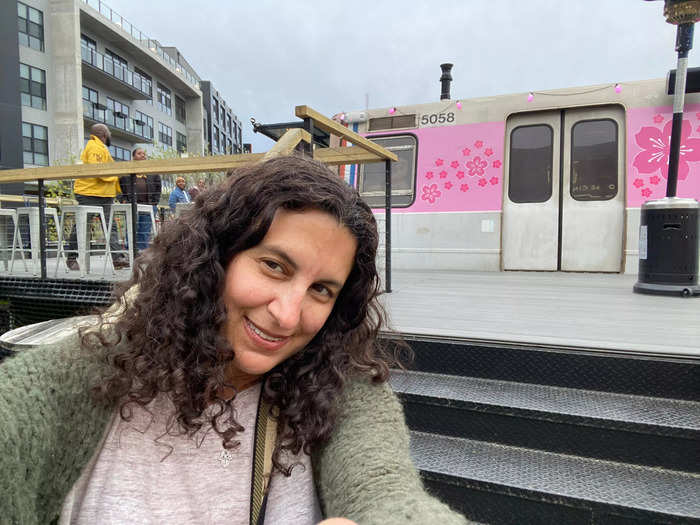
Washington, DC, is a compact 68 square miles nestled between Maryland and Virginia. I think it's a mistake for visitors to stay in a neighboring suburb rather than in the city since commuting from outside of DC will take precious time away from sightseeing.
If you stay in the city, you can also save on car rentals and pricey parking by being within walking distance or just a few metro stops from many attractions.
Luckily, there are dozens of hotels throughout DC proper at various price points. My favorite neighborhood in this area is DuPont Circle for its access to restaurants, nightlife, and lunch by the fountain in the neighborhood's namesake traffic circle and park.
If you're interested in exploring the city by bike, I'd recommend the Canopy by Hilton in DuPont Circle, which offers guests complimentary bicycles. For a splurge with a twist, you can stay at the nearby Mansion on O Street, an immersive boutique hotel filled with hidden doors and rooms, including one resembling a cabin with a giant stuffed bear.
If you want to be closer to the National Mall, I'd choose Hotel Zena, which is in the heart of the historic 14th Street Corridor and close to popular restaurants and bars. The hotel is also part art gallery and has murals and artwork throughout the property that celebrate women, created by women artists in DC.
Go see the monuments after dark, not during the day — it's one of my tricks to avoid big crowds (and the views are magical).
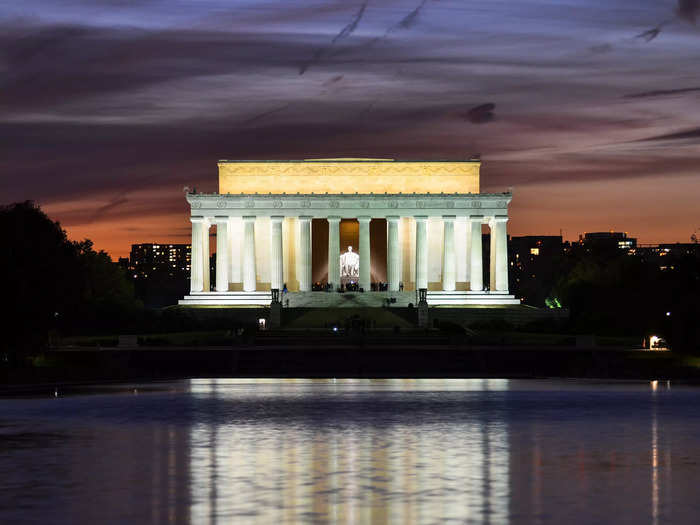
Despite living in DC for years, seeing the monuments on the National Mall at night still takes my breath away. In my experience, no matter how crowded the National Mall is during the day, it clears out significantly after sunset.
The National Mall has a completely different atmosphere at night; it becomes very quiet and still, which makes it my favorite time of day to see the monuments.
I also find monuments more awe-inspiring when they're lit up and more serene without the daytime crowds. Sitting on the steps of the Lincoln Memorial at night, without feeling rushed, is one of my favorite things to do.
The National Mall is open 24 hours a day and I always see security there, even very late at night, so I never hesitate to visit after dark, even with children. I especially love visiting the monuments during the summer evenings when the day's heat has died down.
I prefer wandering around the monuments, but you can also follow a self-guided tour for free, or take a nighttime bus tour if you don't want to walk.
Don't miss out on DC's parks. There are miles of nature to enjoy.
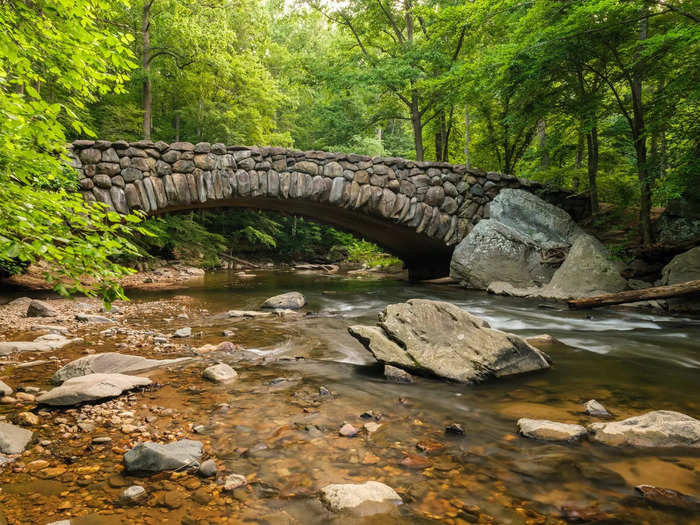
In my experience, since many tourists come to DC for the monuments and museums, they overlook our city's outdoor spaces. But DC has a massive national park, Rock Creek Park, that few tourists seem to know about, despite the fact that it's one of the oldest urban parks in the US and twice the size of New York City's Central Park.
The park is home to beautiful trails, nature centers, horse stables, and a planetarium. It also has civil war defense sites and other political attractions, including Pierce Barn, an old Cold War spy station used to gather information from nearby embassies.
Those of us who call DC home love exploring Rock Creek Park, and I wish more tourists took the time to visit. My family spends many weekends and summer days hiking there and enjoying the creek and waterfalls — I've come to think of it as an extension of my backyard.
And for more nature, the Anacostia Waterfront Trail, Kingman and Heritage Islands, and Kenilworth Park and Aquatic Gardens are other places I like to explore in DC.
Don't underestimate how long it takes to see the museums and how much walking you'll do.

The Smithsonian Museums and National Mall attract visitors from all over the world — and for good reason. They are interesting, impressive, and worth lingering over.
Since I live in DC, I have the luxury of taking my time to explore its museums and monuments, which is why I know it can take three to four hours to get through some of them, if not multiple days.
In my experience, tourists are better off choosing the top one or two museums they want to see that day instead of packing in three or four museums and missing out on the full experience of each one.
Many visitors also don't realize how much walking they'll do in Washington. On top of the museums, the National Mall is far bigger than most people realize, so seeing the monuments and galleries on foot involves a lot of walking.
When I visit one of DC's museums or head to the National Mall, I can easily rack up between 15,000 to 20,000 steps, so I make sure to wear comfortable shoes and carry sun protection.
I love experiencing DC's higher-end venues with affordable workarounds most visitors don't know about.
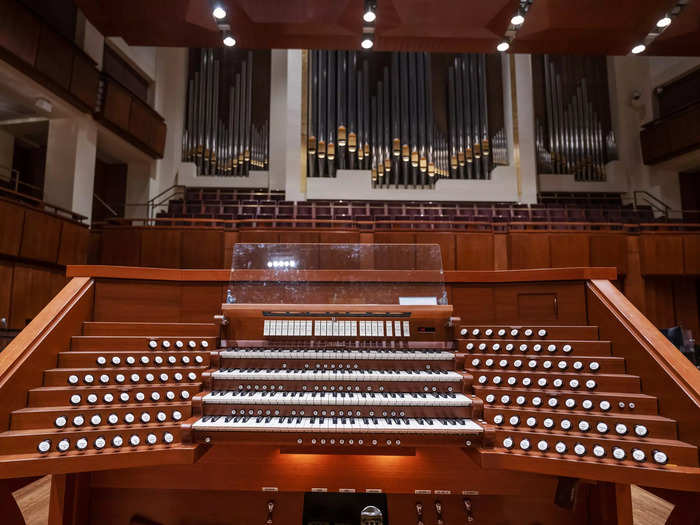
It can be easy to visit DC on a budget since most of the main attractions are free. Still, I've also found ways to get inside some of the city's higher-end destinations affordably.
For years, I wanted to visit DC's Waldorf Astoria, formerly the Trump Hotel. An overnight staycation wasn't in my budget, so I decided to splurge on high tea in the hotel's famed Peacock Alley. While still not cheap at around $90 per person, the tea cost less than spending the night or ordering a full dinner and I got to experience the hotel's regal atmosphere.
The city's famed Watergate Hotel also has restaurants and a bar that are all open to the public. I've gone in for a drink to soak up the history and ambiance without spending a fortune.
The Kennedy Center hosts shows year-round, but regular tickets can be pricey, so I keep an eye out for the center's many free activities, like musical performances on the Millenium Stage. It's also completely free to walk around the center's outdoor area called The Reach, and to visit Art and Ideals, an exhibition dedicated to JFK, and the famed Hall of Flags.
Tickets for museums, the zoo, and popular tours are free, but you should reserve them in advance.
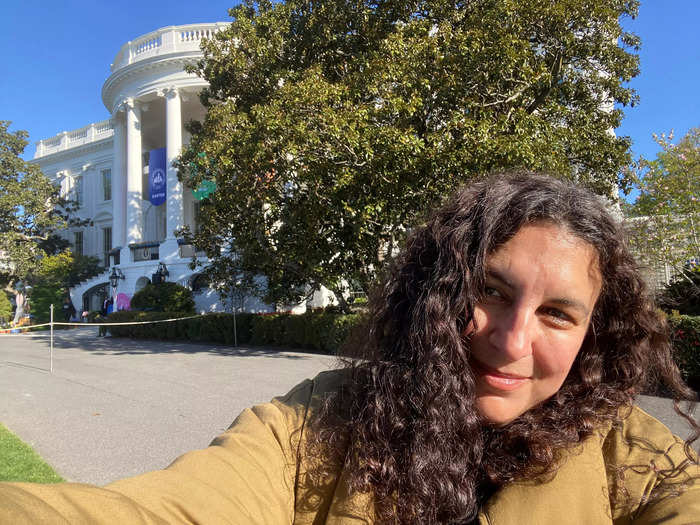
While many of the attractions around DC are free, they often still require visitors to reserve free tickets in advance with set times to enter.
If you're a US citizen and want a tour inside the White House, the only way to get tickets is to contact your Congressperson or Senator in advance. Each office receives a limited number of tickets for guided tours, and they're popular so they can go fast. Requests for tours must be made between three weeks and three months ahead of your desired dates, and I recommend requesting on the early end.
Visitors from abroad can also contact their embassies to request a White House tour. For the Capitol, free guided tours are open to all guests and can also be reserved ahead online.
Going to the top of the Washington Monument is another highlight, and one I especially recommend to first-time visitors to DC. You can reserve timed tickets online, or pick up same-day tickets in person on a first-come, first-serve basis.
The National Zoo also requires timed tickets, as do several Smithsonian museums.
Even as a DC resident, I find it hard to keep track of which venues require tickets and which don't since they frequently change, so I always check online before making plans. Another pro tip: If you find yourself stranded somewhere without tickets, it's worth asking an attendee if any slots may become available — because the tickets are free, it's common for people to reserve and not to show up, so you might just get lucky.
Look beyond DC's national sites to learn more about the city's local history.
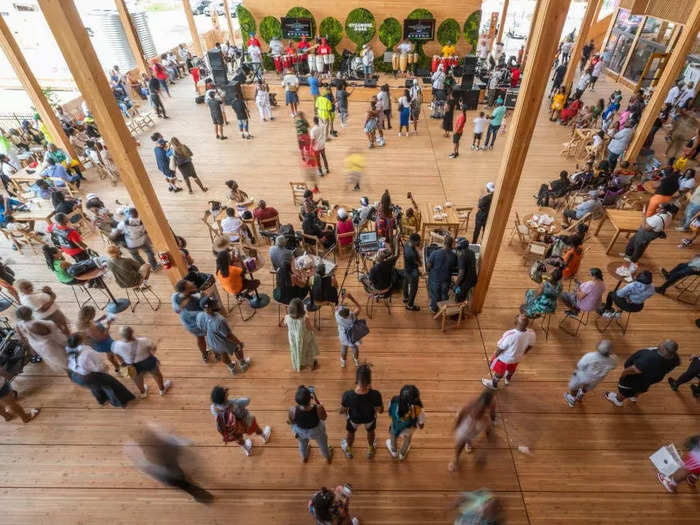
It's easy to get swept up in the national significance of DC, but I think visitors here can do themselves a disservice by skipping the city's local history.
Go-Go music (a sub-genre of funk) is a lively part of DC culture that originated here in the 1970s and is still popular. Street musicians throughout downtown often play Go-Go music (We Are GoGo Music is a great website to check for Go-Go events).
Stop by the U Street Corridor, now a vibrant food and shopping district, which was once the epicenter of DC's civil rights movement.
The main branch of the Martin Luther King Jr. Memorial Library has an expansive exhibit about the history of Washington, DC. I learned so much from this exhibit when I visited after it opened in 2021, and think it's fascinating to see how the city has evolved over the years.
The MLK Library is also close to other attractions like the National Portrait Gallery and the American Art Museum, which are free to visit.
DC's off-the-Mall museums are not as well known, but still worth a visit.
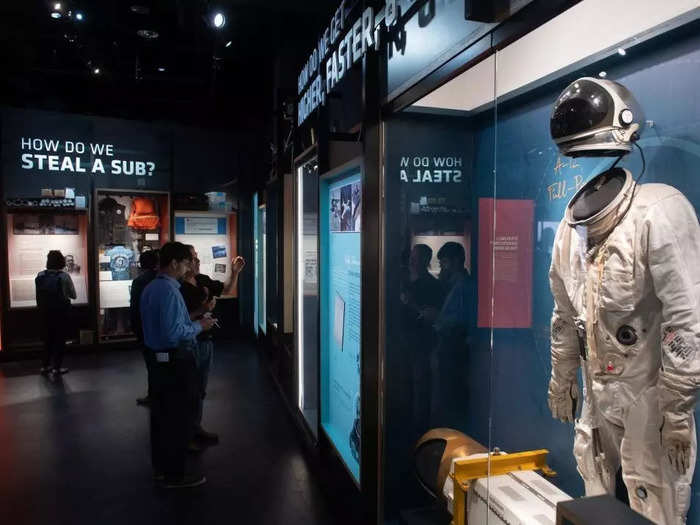
The free Smithsonian museums are a highlight of any trip to DC, but Washington has so many other fantastic museums that visitors often miss.
I usually visit the International Spy Museum at least once a year and go to Hillwood Estate, Museum, and Gardens every Spring.
I also keep an eye on exhibits at the National Museum of Women in the Arts as well as the National Geographic Museum, which often displays famed photographs from its collection and behind-the-scenes looks behind National Geographic expeditions.
I eat local whenever possible to support our homegrown restaurants, and wish more tourists did, too.
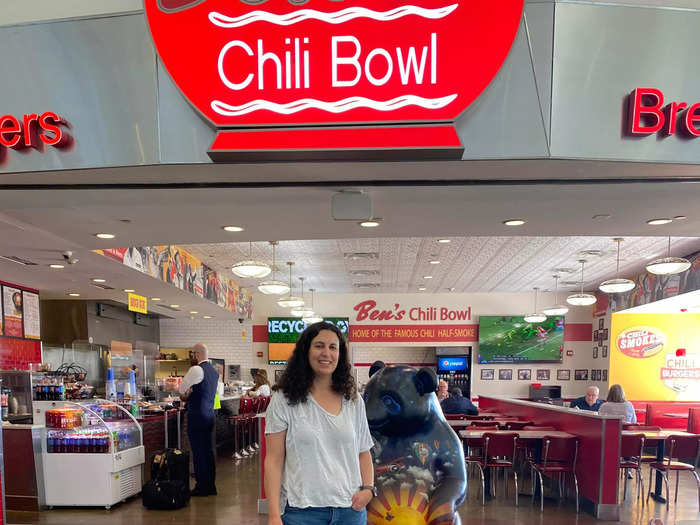
It can be easy in DC to find fast-food chains or grab a meal at whichever touristy restaurant is nearby. But instead of overspending or eating what you can find anywhere, I always recommend visitors try DC's one-of-a-kind restaurants run by locals.
Ben's Chili Bowl is a must-visit, in my opinion, as the DC-local chain has been serving comfort burgers, fries, shakes, and more since the 1950s. My family likes to eat here, and I usually go for the half-smoke, a smoked sausage in a bun topped with chili sauce that's the city's signature dish.
I've also found terrific Ethiopian food in DC, as the city is home to one of the largest Ethiopian communities in the US. My favorite way to eat Ethiopian food is to order a platter served on a large piece of injera, a spongy flatbread. A wonderful Ethiopian restaurant is Elfegne, a family-run establishment that serves heaping, perfectly-spiced portions. Be sure to check out their section of Ethiopian craft beers and wines, too.
Chef and humanitarian Jose Andres has several restaurants in DC, with different themes and price points. My favorite is Zaytinya, where I go for Greek-, Lebanese-, and Turkish-inspired mezze. The ambiance inside reminds me of trips to Greek Islands, but I prefer to sit outside on the tranquil patio when it opens seasonally.
Another must-visit is Oyamel, an upscale Mexican tapas restaurant famous for its tableside-prepared guacamole and salt air margaritas.
One of my favorite local spots for casual drinks is Metro Bar, an outdoor bar and food truck restaurant, which serves drinks from a repurposed metro car from the DC transit system.
Museums are wonderful but don't forget to see how the locals live.
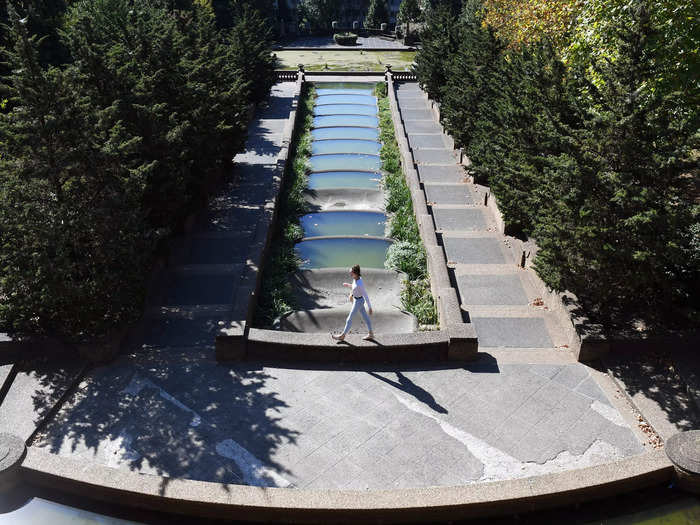
Living in Washington, DC, means simultaneously inhabiting two distinct worlds. It's hard to escape the political life that dominates one part of the city, but no trip to DC is complete without strolling through some of the city's quaint neighborhoods, each with its own distinctive personality.
Almost everyone who lives in Washington, DC, knows several people who work on Capitol Hill or whose work involves politics in some capacity. I never know when I will be delayed by a motorcade. Yet, there is a separate city with its own culture filled with regular people who don't aspire to hold political office. Washington, DC, has so many lively neighborhoods worth exploring.
I lived in Adams Morgan for years and will always love the neighborhood's colorful bars like the famous Madam's Organ and Meridian Hill Park with its gorgeous fountain and Sunday drum circle. It's hard to resist the allure of Adams Morgan's signature Jumbo Slice Pizza. A single slice can be as big as 18" and they're open until 3 a.m., well after the bars have closed.
The Brookland neighborhood, near Catholic University, is a vibrant hot spot filled with trendy restaurants and bars. Brookland Pint and Busyboys and Poets are two long-standing favorites.
And lastly, instead of buying cheesy T-shirts emblazoned with American flags, I recommend visitors support DC's residents at a Shop Made in DC's outpost. These shops sell products made by DC makers and artists and I often buy items for my own home or gifts from here myself.
Popular Right Now
Popular Keywords
Advertisement